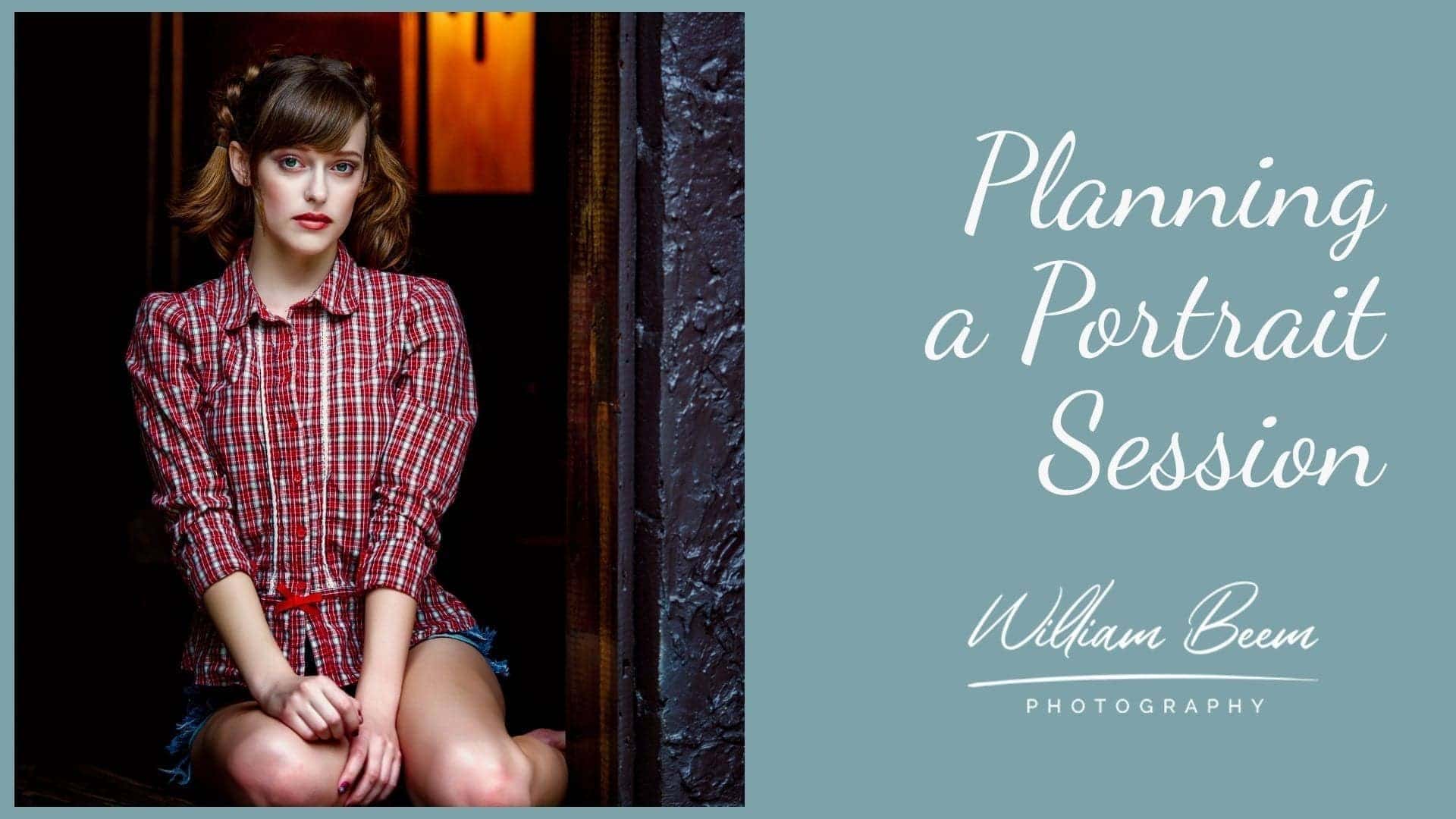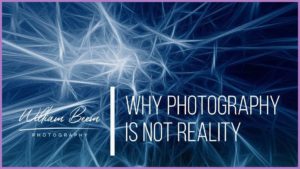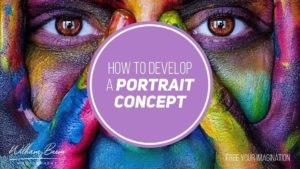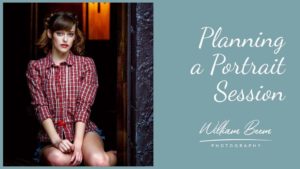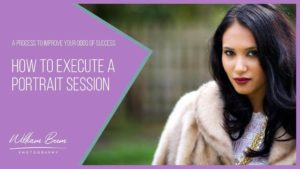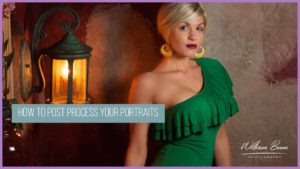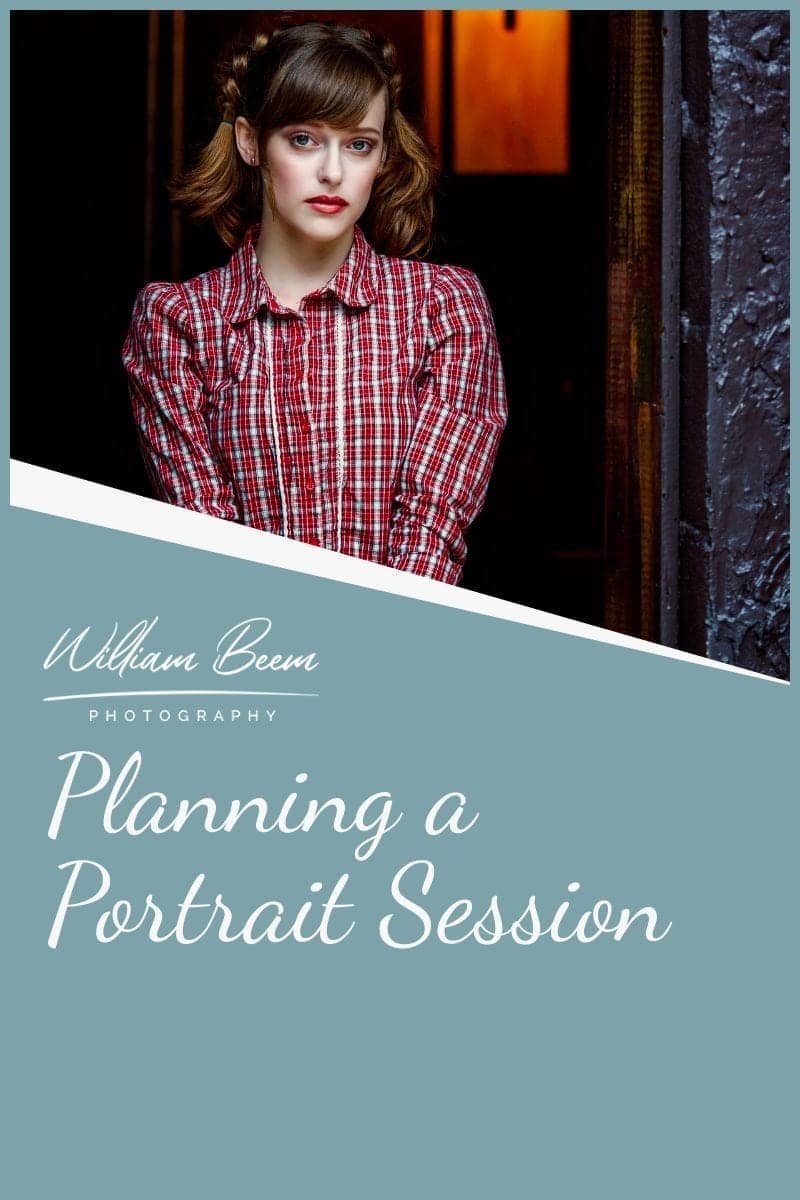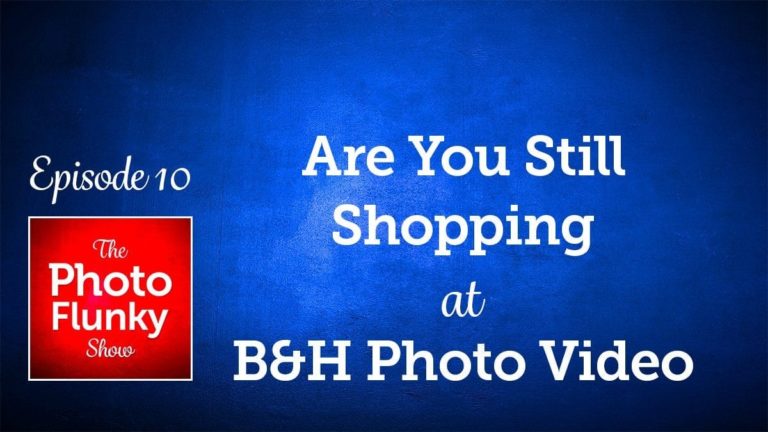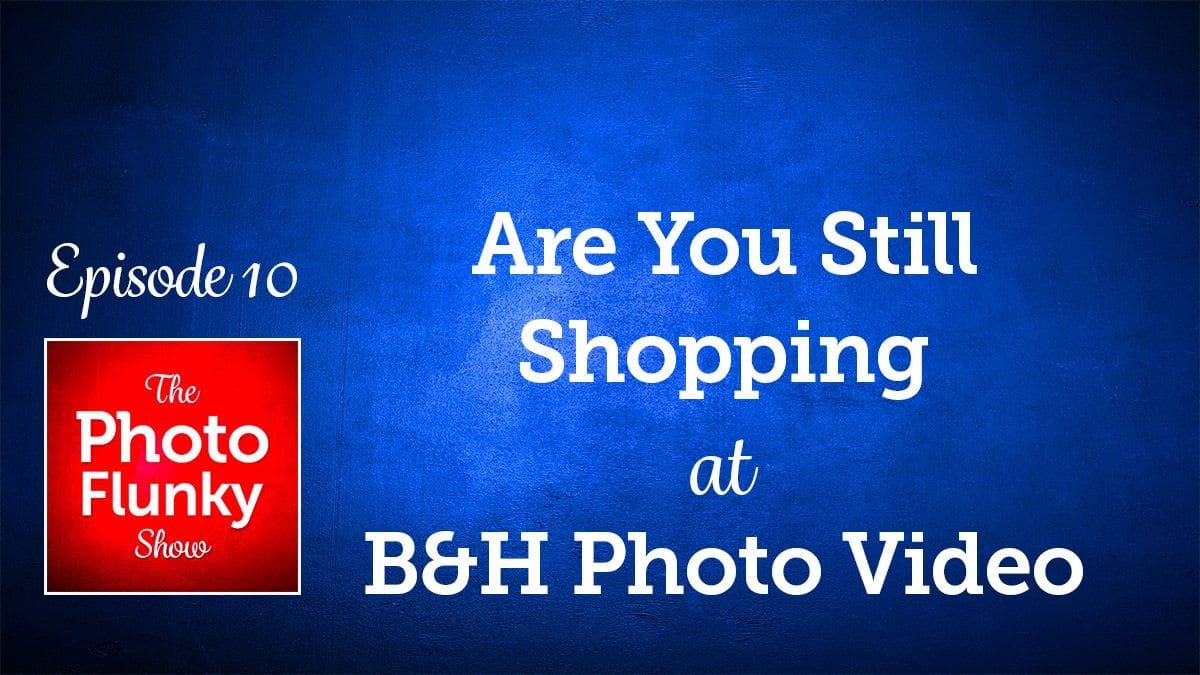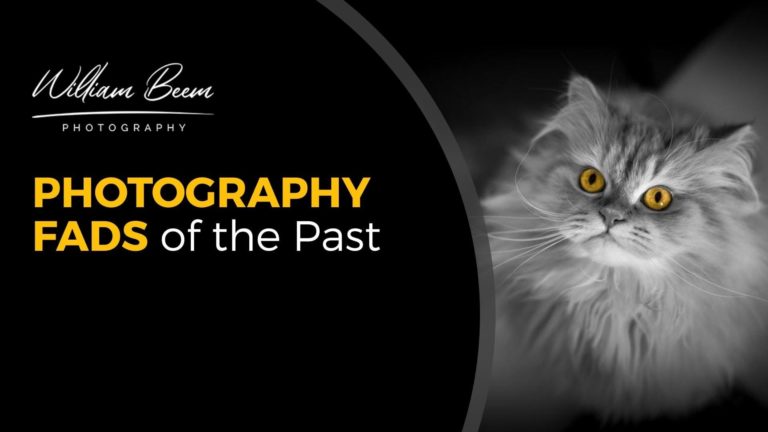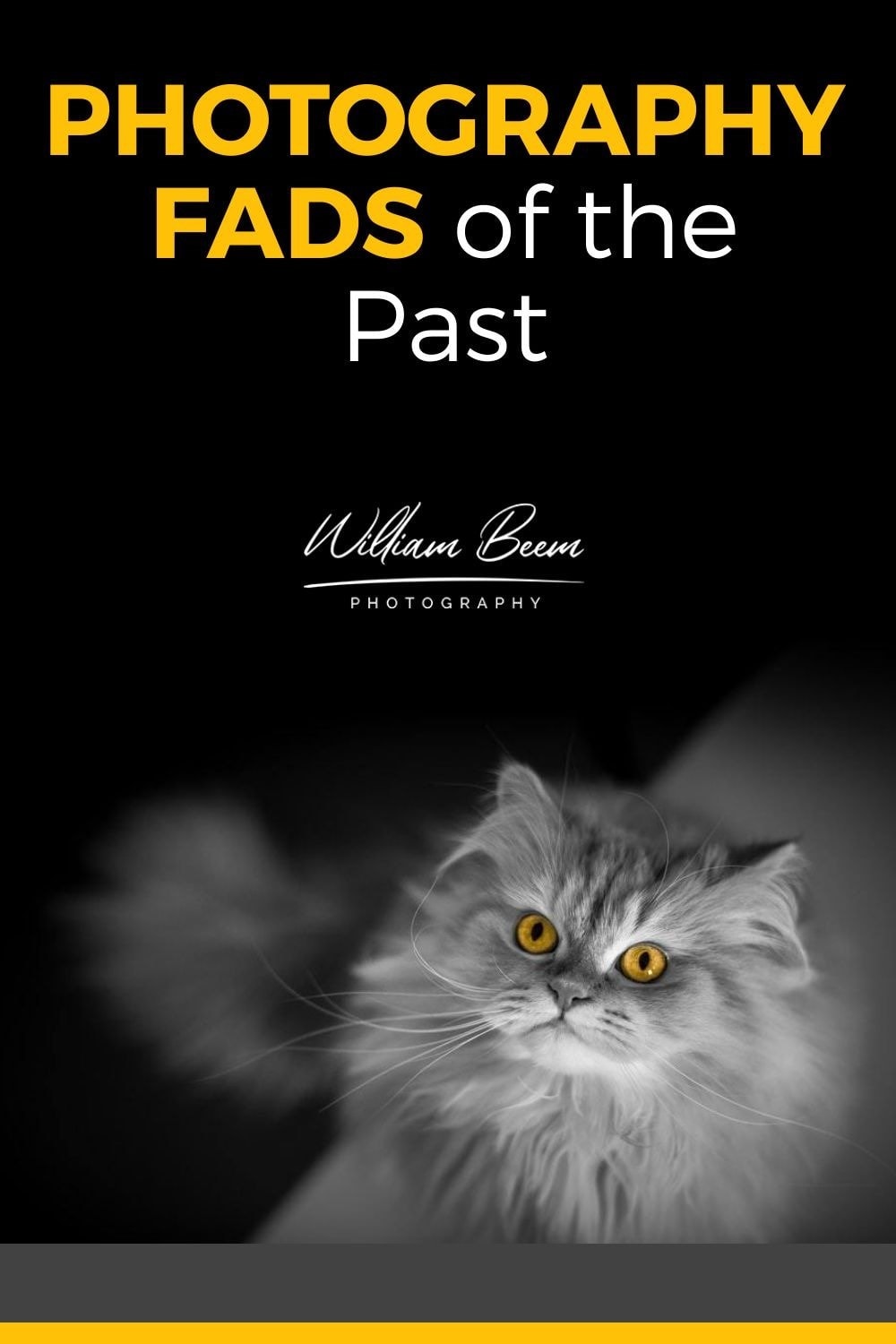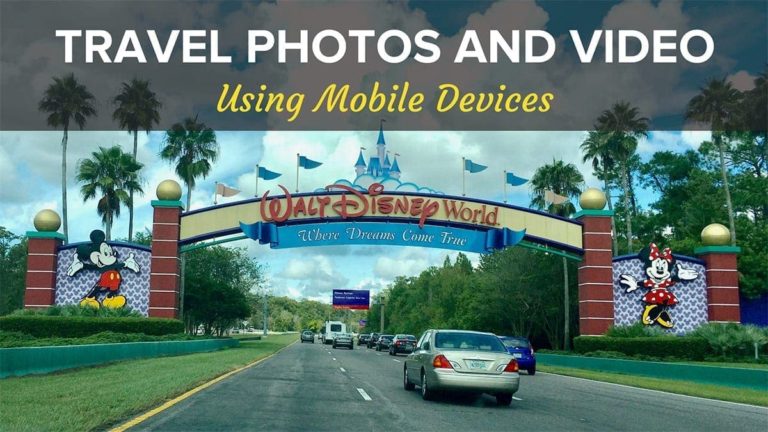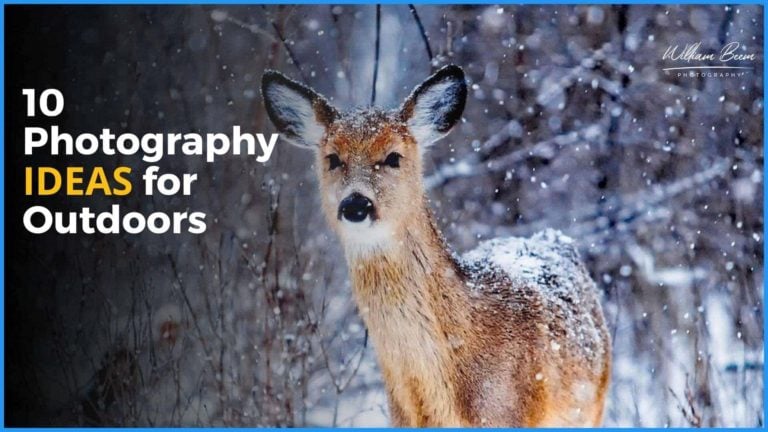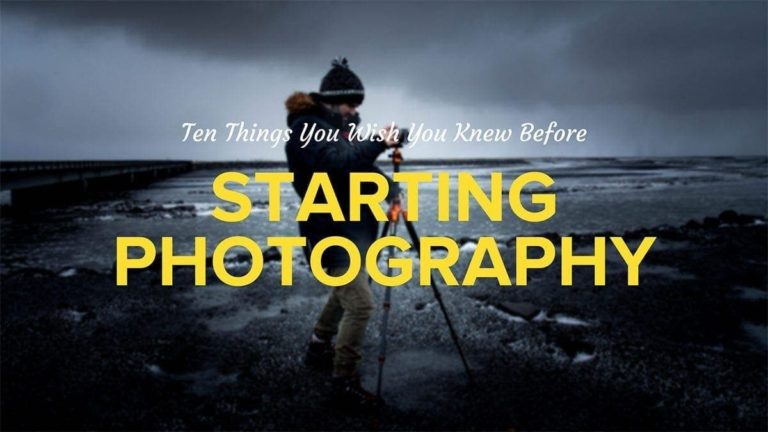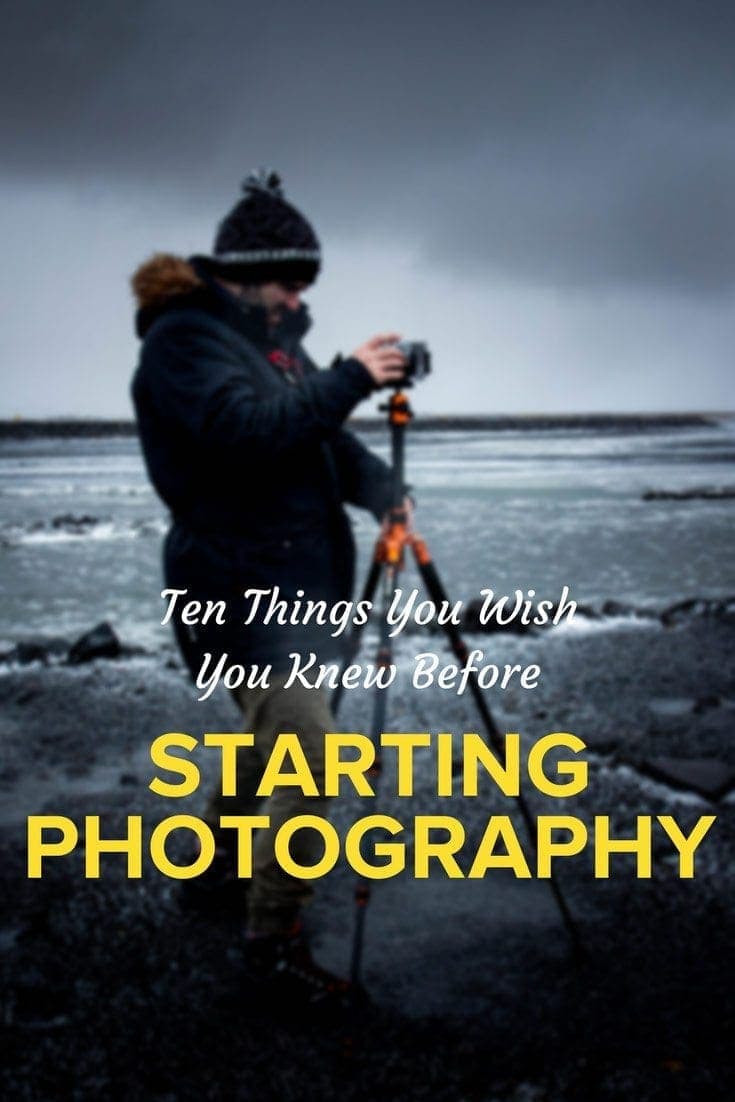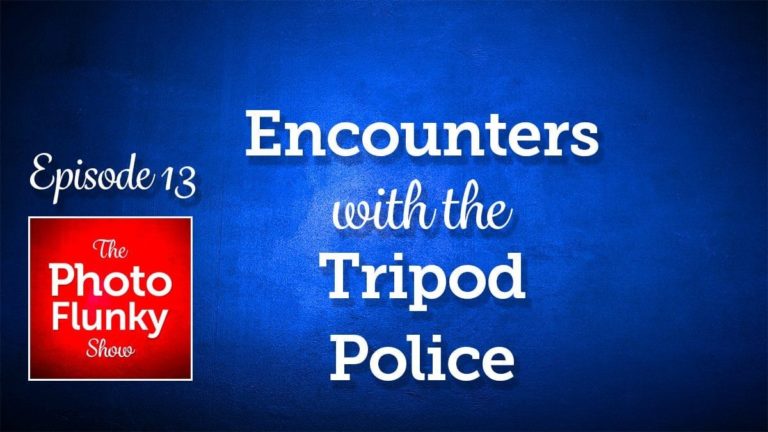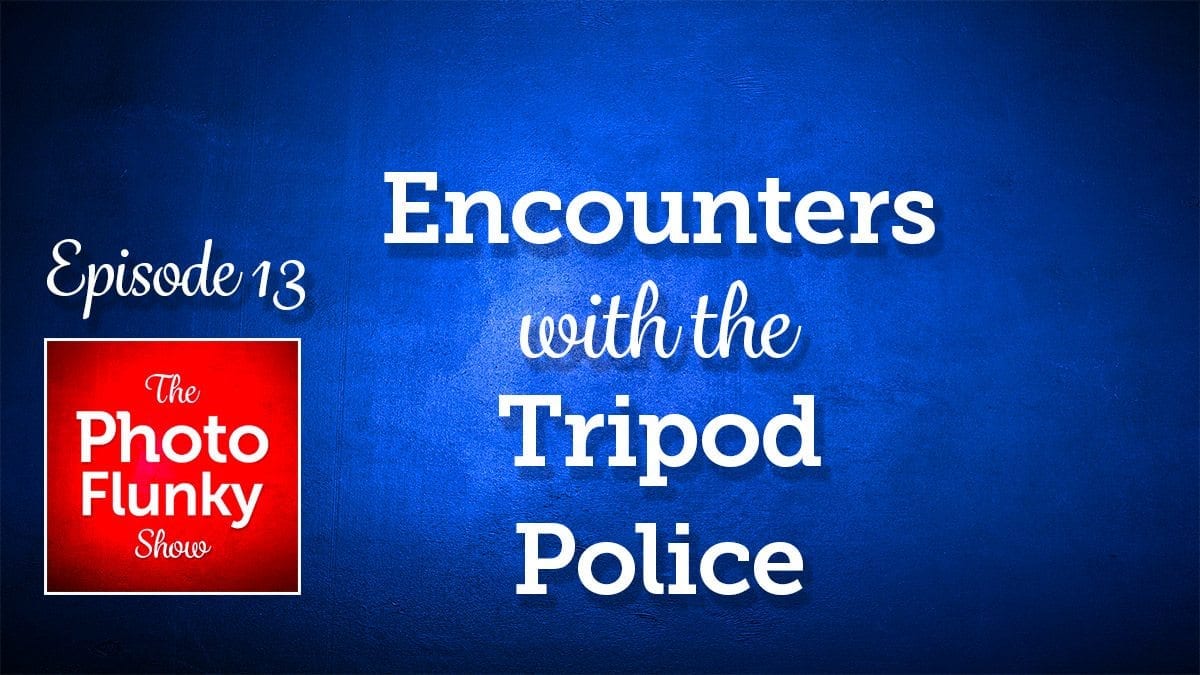Affiliate Disclosure: We earn a commission if you purchase through one of our links at no additional cost to you.
It’s time to plan your portrait session after you come up with your portrait concept. That’s great!
Now what do I need to know to plan a portrait session?
Here’s How to Plan a Portrait Session
It may seem daunting to turn your imagination into reality, but that’s exactly the next step you need to take. The idea of planning for a portrait session is pretty much dissecting your portrait concept, and then determining who and what you need to make it ready for execution.
In this episode, we’ll give you some guidelines to follow for every portrait session you can conceive. While it may not be an exhaustive list, it has a framework that gets you to ask the right questions to determine the elements you need for your portrait session.
We’ll start with reviewing your portrait concept and the story that goes with it. Is there a mood that you can define with your concept? You’ll start by extracting the mood and emotion you want your audience to feel.
Next, you’ll want to assemble your talent. At the very least, you need a subject – or maybe more than one. That’s not the end of possibility, though. You may also want to add people who can help.
Is your portrait session in a studio or on a location? Either way, you need to scout your location to see what’s available. A studio is just an empty box that you fill with things from your imagination. You have more control this way to move things around, but it’s a lot of work to stage a complex scene.
That’s why many portrait photographers like working on location. If you can find a place with the right mood and elements, a lot of your work is already done.
You’ll need to make sure that your portrait lighting fits your concept. In a studio, you have complete control of every light you bring with you. On location, you may only need the available light there. However, you can always supplement it with flashes and light modifiers to enhance the look in your portrait.
Now you just have to check your gear, schedule a time and make sure your team can get there.
This is a high-level view to plan a portrait session. We’ll fill in more details with later episodes. Check out the time stamps below for our discussion of specific details.
Time Stamps
On the last couple of episodes of, I like your picture. We've been talking about the various stages that you need to get into a portrait shoot. The first one we talked about was coming up with your concept and then we kind of backtracked a little bit about the mental attitude you need to be an artist to really help you create an interesting portrait session. So this week we're going to go over at least at a high level, how to plan a portrait session on. I like your picture. I'm William Beem. Welcome to I like your picture, the show that helps you improve your photography with visual storytelling. What is visual storytelling? It's a method of approaching your photography with a knowledge of who you're trying to serve with your photos and what emotion you want to make them feel. We encourage you to concentrate on your subject light and background to create a photo your audience loves. I'm glad you found us. Hi, my name is William Beem. Hi, my name is Lee Beem. We're going to be talking about planning your portrait session and this is going to go over to high level. I think I'm going to drill down on some of the subtopics here in future episodes, but for right now we kind of have a series going on from, you know, coming up with your concept to how you're going to go through and plan it, shoot it, do your post-processing on it and deliver it. So what, we've got a few different segments that we've been going through, and this is of course the planning session. So the first thing that comes up with planning is review your concept. You don't necessarily go from your concept right to your portrait session. You may come up with some concepts at any time. I mean, it could be just while you're out with a camera or it could have been that you've been thinking about these things for a while and now you say, okay, I've got time. Let's make this happen. The first thing that I think that you want to do, if it's going to be a portrait concept, is you've got to find your talent. Yeah, I know. And the talent is not necessarily just your subjects. You know, it could be a model, it could be a person, you know, is, it could be someone who's hiring you to uh, take a portrait. But you also need to understand, are you going to need a stylist and perhaps a makeup artist. Are you going to need someone to be a photo assistant? So all these things come together. It's like, in other words, you got to build your team. So once you have your team kind of assembled, you know who's going to be there and who's going to be with you. You've got to be prepared to describe your concept. This is the one thing that I think is going to be a little different from the way I take my photos and the way Lee takes her photos. Lee is very much a solo shooter. So you're, you're not doing portrait sessions. All of your subjects are inanimate objects and you're your own stylist basically. I guess you're, you're the only artist that's in there. Yeah. So I'm, yeah, my way of doing this is very different, but that's because they're knocking portraits. As soon as you take up the human element, I do need help. Some knows if I have to set up something that's tall because I'm short. I've got short little legs and I've also helped you with flash every once in a while so you can have some lighting in case you wanted to take photos when the sun wasn't out. Yes, but other than that, I'm going to put you on the spot with this. What if you had to find people to help you with your portraits? What would you look for in them and their qualities to try and find someone who you could work with? I need somebody, who doesn't. It sounds terrible. What to say. Doesn't question things too much, but I always have these ideas in my head and I think that's where it's important to understand how your thought process and your imagination flows because to try and describe something that you visualize. Some of us do it better than others. I tend to have everything floating around my head. And the way I organize things is by starting to do things and they kind of fall into place as I start moving rather than plan everything and then start working. So for me to be able to explain and break things down to people is very difficult. So I need people who, well, I guess when I say trust me, You just, you need people to execute on your vision, not necessarily provide you with feedback. Uh, well the feedback is fine, but I need people not to try and assume what they think I meant. I need them to do what I tell them, even though it looks totally bizarre. So that's, that's what I'm imagining, which is probably a good thing. Why I don't have a team. It would be very frustrating to work for me. This Is the reason I asked you about that is because I think this is an issue that a lot of people have is particularly if you're very used to the way that you work, you know what you want to do. You don't want to be bothered with other people. In a way, but sometimes you do have to rely upon them. So for example, with portraiture, you're obviously gonna at least have a subject there. You're taking a picture of somebody, maybe a couple of somebodies, but you're gonna have someone there. The question is, are you adamant to get the concept that's in your mind or you willing to work with a team, get their input and you know, kind of go through a flow. They're going to be situations where both are appropriate. If you've got a storyboard and it has to be exactly this or it's got to be just that way, then you gotta be able to describe your concept to somebody and they need to be able to execute on it. And if you're open, you may need to be prepared to accept some feedback. And I think even if you're wanting exactly what you have in your head, you're going to get feedback whether you want it or not, because that's just naturally what people do. I don't think it's meant to be disrespectful, but one of the things I find with working with other people are personality traits that kind of come up and it's sometimes you don't know until you get together working with some people, but I think this is why some teams work together very well and they're hesitant to work with someone who's not part of that team. But actually that makes perfect sense because you get to understand each other's flow and these are not things that he can break down and explain in a list or on paper. I mean like for me the biggest challenge I have working with someone is everything's going on inside my head and I'm kind of ruling with it as it's flowing and nobody can see what's going on in my mind as I'm eating. So this somebody speaks, they disturb things in my head and I'm like, I just want to slap her. I was like, don't interrupt what's going on in my brain. That's why I don't go in the kitchen when she's cooking. But I think the idea is you need to determine for your portrait session if you're working with a team or even if you're just working with, you know, one subject, what kind of relationship do you want to have? You got to find the talent, but you've also got to have a relationship of some sort and that can be whatever you want it to be. You're the director, you're the producer, you're the one who's in charge of the shoot. If this is your concept, and if you're, if it's not your concept and you just brought on as a photographer, fine, then you need to kind of sit back and follow the lead of whoever is directing the concept. The other thing is I think when you're, you know, when you're starting off with anything, it's always helpful to have people assisting you who can give you input and feedback. I mean, there are things that maybe it's photography, maybe it's not, but what I find when I'm new with something, actually want that input. But as you build your confidence or you have the spray certain way of doing things, when you know exactly what you want, you almost don't want anybody to interfere with it. So your needs from an assistant are very different. Um, once you kind of find your feet and as you establish yourself in doing whatever you do, I think it's very important that the people on your team know what their role is. So for example, if you're a portrait photographer, you, you're in the middle of a shoot, the model knows what he or she is supposed to do. But you may have a stylist who's sitting back while you're doing a shoot looking and saying, okay, I see something that's out of place. The photographer may not necessarily see that, you know, the hair has gone the wrong way or the wardrobe has gotten kind of wrinkled up or something because that's why it's good sometimes to have people who are not looking through a lens also watching to see what's going on. And then they need to have the confidence to say, hold on a moment, I need to step in and correct this. And there are times I wish I've had that because for example, I've got a photo of a local model that, you know, she's a wonderful woman, she's very lovely, but I look at this photo and her hair was like all fly away and while I was shooting, we were kind of in a rough situation and I've, I got the pose right? I got her expression right. But when I go back into my camera and I look and I see all these flyaway hairs, I thought that's a lot of post-processing that I really didn't want to do. And that's where, okay, if you have a makeup artist who's watching to see, you know, did something screw up her hair, did something or his hair or did something, screw up the wardrobe. Do you have a stylist that says this isn't the way it should look or something's wrinkled, not a place. Or maybe you know, it's just not covering areas that it's supposed to cover. It doesn't really matter what the problem is. If you've got someone behind you, they can look at that. You need to tell your team what's expected of them. Same thing. If you have a lighting assistant, maybe instead of having a light on a stand, you've got someone who's holding the light and directing it and you tell this person wherever the model goes, follow the model's face with a light, you know that way. Cause sometimes they'll turn to the left, they'll turn to the right if you're on, if you've got your on a stand, you know the light only comes from that one direction. Maybe sometimes you can be a bit more fluid if you have someone to assist you. But if you don't tell them what's in your head, they'll never know to do that. Yeah. One of the things I think once you've got your team assembled and you kind of know who you're gonna be working with, that's when you kind of want to start thinking about what is the mood of your story and maybe you want to create a mood board. In other words, you want to get a collection of photos and Pinterest is really good for this. If you have a private board where everybody can get on, everybody puts in some suggestions like, okay, this is the kind of background I'm looking for this. This is the kind of water by having mine, this is the kind of hairstyles. This is the kind of lighting that I want to get, or ideas. I think if you're going to work with a collaborative team, let them put something in and if you're going to have a team that you just say, here's my mood board, I need you to do your job to make it look like this. That also kind of helps convey the information to them. Yes, so for example, with yourself, you have a very specific kind of, I don't know if I want to call it a mood, but you've got a very specific style that you work with and if you put that up on a bore for someone else, say, okay, this is the style and these, this is examples of my work, but I want to do something that is a bit brighter and then say, okay, I like this on this photo. I want a little bit more of this color on another photo and then maybe you can tell us like, you need to go find me these flowers and you need to go find me this background. And he needs to be able to show people, not just tell them. I think I'll always help to show people if you're doing something visual, it's good to have examples cause when you say somebody else's thing bright or when something colorful, that could mean something different. One of the things I'd like to bring up is here's my color scheme. In other words, it doesn't have to be like a really exact this color, but I'm thinking these are the colors I have in mind. And that's how it affects the mood of the story. Yeah, exactly. So like if you want to have one of your coffee photos that's more like a a diner set than a Victorian English set, you're going to get different things for your background, your colors and so forth. So you're going to make that mood come to life, but you need to, you need to know kind of what the idea is that you're looking for and you've already got that with your concepts. And now the question is can you convey that to people? And I think this is true even if you're doing it by yourself, because if you got to go someplace like around here, we've got a store called Joanne's. I think they're a us national chain. They are national. I don't know if you get them in every state there's joins, there's Michael's and hobby lobby is not one of our favorites, but that's another one. Sometimes you know, we need to go out and we need to get for the flat lay stuff. We need to get wooden backgrounds or maybe we get a different type or color of backgrounds. But you need to be able to describe to somebody if you can't find what you're looking for, you talk to somebody, the store and say, okay, this is what I have in mind. Maybe they can come up and say, Oh, take a look at this. Yeah. Same thing with wardrobe. There were a lot of antique stores around and maybe you're looking for something that's a period piece and say, all right, I have an idea. Here's a picture of what is in my head. You know, you get that from your mood board and this, they might say, I don't have anything like that, but go take a look at this other store. Or they might say, Oh, I've got exactly what you need, or here's something that, but you have to work on whatever the answer is going to be. You need to convey that story. You need to understand the mood and you need to be able to, except I think some help from people within their specialty. This is a good example of why I like to be a little bit flexible. When I get a vision in my mind, I very, very rarely end up creating a photo. That's exactly what I envisaged in the first, anybody does get one or even that close to it. Because usually what happens if you're, for example, you gave the, you know, an illustration of trying to find something from an antique store. Now you're probably not going to find exactly what you want, but you might find something else that could work. And that may mean changing a whole bunch of elements to the way that you set out to your photo. And if you're open to that, you can get something great. This is why always helps to remind yourself that nobody saw the vision you had in your mind when you first imagined it. So if you change it, nobody's saying, Oh he didn't do what you were supposed to do except you. Exactly. And I think if you have some flexibility, let's say that you want to do a world war II pilot for whatever reason, and you know they're going to have that kind of olive drab, you know, uniform and, and you've, you've just got this vision in your head and you go out to your army, Navy shops or whatever kind of place where you want to get that uniform. They say, you know what, I don't have that, but I actually do have a world war one pilot uniform over here. Can you get your vision? Maybe if it's in a different period, but similar to what you want. And I'm just kind of making this up on the spot, but I'm thinking you never get exactly what you want unless you're willing to go a long time and a long way to get every little piece. And it's kind of like how quickly do you need to put this together? How important is every little detail to you that's in your head? And those are decisions you have to make for yourself. It's like, you know, world war II. No, we're, we're like, you know, decades apart here. I need world WarWar II field, nobody else lack of go-to. And that depends on your story. It depends on your story. Or maybe you've got a prop someplace and it's like, well this is the plane that didn't exist in world war II. You know, that someone's going to let me use. So no I can't go with a world war one uniform with a world war II plane. A few stories about world war one. You cannot have world war two props in there or anything else. I mean, so that's why I say it depends on your story. If your story is very specific, um, you got to play with different things. Now on the other hand, if your story is about a surfer, you know, looking out the waves, you've got a lot of flexibility there and you know, different size boards. Does that matter if they're working with a long board or short board? Does it matter if it's East coast or West coast? In Florida? Not so much cause we got both of those. If you're willing to drive down to Miami area, if we had a South coast. But I mean it really depends on what your vision is and what you can get to come close to your vision I think is really what we're saying here. So after that you need to decide where are you going to take your photo. Is this going to be a studio thing or a location thing? And either one is fine. Here's the difference. If you have a studio, all that is it's just an empty box where you bring things in from your imagination and you have to bring everything you need into the studio. If you have, I imagine you're probably not bringing motion and if you're doing a server, but I mean you can, uh, you can also go on location and nine out of 10 times, I think location shoots usually look better. Unless you're doing like a subtle, this is just like a still life portrait or a head shot or something of that nature. Studio is fine because it's air conditioned or if you're in a cold environment heated. But if you're trying to tell a story, I think locations are really going to be important to you and you need to go scout a location. So let me give you a couple of things that you need to keep in mind as you're looking for your location. The first one is do you have access to location? If I want to go shoot in, there's a bar in downtown LA area where I live and this kind of got a great atmosphere to it. It's, you know, it's got the neon light, it's kind of busy and it's got a nice wooden bar and it's almost a little bit smoky. We wouldn't want an actual cigarette smoke in there at the time, but we might bring in like some fog or haze or something like that. Can I get access to that location? Well that depends on the guy who owns it or the woman. I don't even know who owns that particular bar. And I might need insurance because if you're going to go do a photo shoot and you're going to bring in a couple of people and maybe if you need to set up some lights or something like that, they want to make sure their liability is covered by you, not by them. Because if you break something, if you hurt somebody that's all on you and you need to make sure that you have insurance in order to get access. I can tell you there are some places that quite surprisingly will just let you in, even without asking if you have insurance. There's a friend of mine who shot at a rooftop bar in downtown Orlando and he didn't think he was gonna get anything, but he would ask anyways. And he said, sure, come on in. We're not, we're not open right now. And he's so, he's got a lovely portrait of someone with a view over the Orlando skyline. It's a, it's a high end kind of bar to, you know, at the grand Bohemian hotel in Orlando and that, did you have to sign a waiver? He says, no, it's from you know, your workman's comp or live liable insurance. He said, no. Yup. You know, if I want to set foot of this, you know, honky tonk bar in my neck of the woods there, they're going to be looking for insurance. Nothing with your location is. You need to understand if your time is limited, in other words, yeah, you can come in here, but I can only let you have half an hour, an hour or two hours, whatever the time is because we've got to open up and serve customers and that's where all this planning comes in. Maybe you've only got a limited time to work and this is going to be the same with a studio. Usually if you don't own your own studio, you have to go rent. And if you get, you know, maybe half a day block of four hours you get all day, that includes your setup and tear down time. That's not all shooting time. That means you get this space, but you gotta login your own stuff or you get to rent their stuff. You've still got to set it up. You've got to determine everything and put it in place. So your time is a consideration when you're planning the portrait session and not only your time, but are you time bound by the people that you have? Maybe you can only get the subject for a little while. A lot of people who shoot the celebrities for something like that for a shot, you need to have everything set up. They come in, you might get a minute if that much they walk in, they put on their smile, you take the picture and they're gone. You know they've got someone who's handling them. In other words, you need to be set up and prepared if that's the kind of a portrait session that you're doing. So that means you go in, you set up, you've got someone who can stand in for your subject, all your lighting, everything needs to be just right and you know, you take your few seconds with a person and they're gone. The next thing I would say as far as scouting is, can everyone on your team get to the location? And that means if you're planning on shooting, something may be out in the woods, up on a mountain or a cliff. Some of your team members may not be willing to hike up there. Now leave is not afraid. She will go running in the woods and stomp on Gators and do all that sort of stuff. But if he told me that we're going to do a photo shoot at the top of a mountain and I've got to hike up this steep trail to get there and then hike down that steep trail to get there, I'm not going to be there cause I'm not afraid of Heights. I'm afraid of falling. Going down is worse. So you wanna make sure that everybody on your team can get to where you need to go. And it may not be quite that dramatic as you know, falling off a cliff or a mountain. It could be something that as simple as, I don't have a ride and I've worked with a lot of models who said, Oh my car's broken down. Like can someone take me there? And you gotta make sure that whoever it is on your team that needs to be there can get where you're going. Yeah, and the last thing you may want to think about is do you need refreshments or snacks? How long is the shoot going to be? Because if you put a bunch of people together and you don't give them a break or there's not anything to eat when they do go on break, people can get cranky. Yeah, absolutely. Maybe it's a good idea to have a cooler box somewhere. Well, you might want to bring a cooler of for you, bring some beer or tequila And also something that you know, if there's, if your model has to get ready and this is something where you might need to touch up or be kind of mindful of long hair and makeup, you may want to make sure that there is like a brush and a handheld mirror or you know, just make sure that you're at, you speak with your model about that. I mean that might go for guys as well. You're just, just depends on the nature of, of the photo that you're setting up. Yeah, and if you're doing wardrobe changes, you know they're going to want a private place probably to change clothes because you know, if you go in a studio, hopefully they've got a restroom or makeup area where the model can change. If you go on location, and particularly if it's an outdoor location and you're expecting a wardrobe change, some people may change in the car. Some people may have one of these, like it's kinda like a little popup of changing rooms. Like you can step pop it up, step into it, and you've got a little bit of privacy to change clothes, then you come back out. But yeah, think about all the things that need to happen during your photo session and then make sure that you've got the stuff available at your location. All right, so the next one is on determining your lighting and we're not going to go into specifics with flash or sunlight or anything like that. Your lighting based upon your vision may determine the time of day that you do your shoot. If you're in an outdoor location, you know, do you need sunrise sunset? Is this something that's going to happen under harsh sunlight? For example, you know, if you're doing sports with like some basketball players, you may actually want somebody to get all sweaty and have that hard light on them. And it doesn't matter if it's from the sun or if it's from your flash. It's just like, what time of day works best for you and how was that light going to fall to consider both on your subject and on your background. So Lee, when you're doing your sessions, you really get intricate with how your life's gonna come in. I mean, in other words, we've mentioned this on a previous podcast. You don't add light like I do, you subtract light. I actually block off, I get the kind of quality of life that a once and then I kind of block everything off with foam boards, maybe some material or dark cloth. And then I open it up where I want the light to come in. So I kind of start with the lights, uh, once, then I get rid of the amounts of lights almost entirely, and then I start letting it in where I wanted. So a couple of things I've noticed about your photos is obviously you've got your subject that's the centerpiece and then you've got your set design, but your light kind of gradually comes in from one side in. When I say gradually, I mean like it's a gradation. It, it's not the same amount of light from one side to the next. So you're, you're working to make sure that light has a bit of fall off. In other words, it's kind of directing your eye towards this spot and then that's where your subject, Yeah, it's kind of a diagonal. Um, And that's one of the things I'm meant by, you need to look at how the light falls on your subject and your background, whether you're using available light or if you're adding flash. You need to think about everything shouldn't be lit the same way. And you should be thinking about how does light fall off. In other words, if you want to have shape and dimension on your subject or on your background or something like that, you don't want to light it all evenly. You want to think about, okay it's brighter on this side or the spot and it fades off into a darker area. And I don't mean like total darkness, but it's like there's going to be a noticeable difference between light on one area and it's going to gradually fade off to another area. So you need to kind of consider that and say, all right, what do I need to do to make that happen? And maybe instead of bringing lights with you, maybe you go at a certain time of day, you get some available sunlight and you bring something else to kind of block off light. So it doesn't fall evenly on everything. So there's, there's opportunities for that. And that could happen. Anything from a very small set like Lee likes to shoot on to a larger production, it just means you need bigger things to block more light. Alright, how many light sources do you need? And let's say again that you're not working with flash, you know, lighting everything individually, which is kind of the way that I like to work at it. Maybe you need a reflector to bounce light into certain areas. That's gonna depend upon the size of the life that you need. In other words, if I'm photographing us a person, do I just want the light kind of on their face and shoulders and maybe graduating down or do I want to light up their entire, you know, length of their body in a fades off behind them. So that's going to determine whether I need like a big five or six foot reflector or if I can get away with maybe a two foot reflector. It's just the lighting that you're thinking about is this is the time of the planning when you decide how am I going to get that light? And it could be flashy view reflectors, it could be available light, you know, blocking things off. It's just how do you, how many light sources do you need and what's going to be on your background and what's going to be on your subject. So those are considerations that you need and finally is the quality of light you need. Is this going to be nice, soft light, you know for a nice little pretty picture or do you need hard light on an athlete to show off their chiseled body and and you know there's no such thing as bad light. It is what's right for your subject, what's right for your background, so you want to give that a little bit of thought. Are you going to need light with color? Again, if you're shooting at a sunset sunrise or sunset, it's going to be a bit warmer. Do you need to wait maybe till blue hour and shoot something that's a little bit cooler? Are you going to put gels on a flash? All that stuff about lighting. When you think about what's in your concept, I think about how am I going to make this happen? Now we get down to the part that most people are having fun with is what gear do you need to bring and that's kind of obviously you're going to need a camera. What lenses do you want to have? You tend to shoot the same distance all the time so you're not really changing up your focus like that much, are you Right now? No, I mean I did. I tend to prefer something. Um, I like a tight crop so um, I I'm kind of one of those either zoom in or I've got something. I mean you were talking about the 35 millimeter lens. I know that that's a lot of people like it. I like the quality of it. As far as the focal light packs, you prefer the crop on the 50 millimeter lens. Although I prefer the quality of the 35. Obviously they have just like worlds apart. But um, I find it always leave wiggle room when I shoot with your 35 because I know I'm going to crop it. Honestly, I liked to shoot a little bit wider than I need to because my cameras are six megapixel camera. I've got room to crop in. I don't necessarily need that much resolution for the work that I do. And I like to shoot a little bit wider, but I also think about do I need to have a bit more compression and how was if I'm doing a portrait, you know, how was the my lens choice going to affect how their body looks. And then again, is this an environmental portrait? So let's go back to that honky-tonk bar I mentioned if I go in there and do a closeup shot on my subject and you don't really see any of the bar, what story have I told? Yeah, so sometimes you know, if you need the environment to be part of your portrait and for storytelling, I think that happens quite a lot. Maybe you need to stand back a little bit further and choose something like a 35 or maybe even a 24 that's to me, that's getting as wide as I would want to get for a portrait. But maybe you just need to stand back, bring in your environment and have the person standing maybe a little bit closer to your lens of they're not lost in the background. Yeah. So that's something that we've seen happen before. And then when you thought about how your gear is going to affect the photo that you're going to take, and I'm saying I'll, I'll take a few different lenses with me just so I've got some choices when I'm on the spot, you know, maybe I'll see an opportunity that I didn't conceive of and or problems. Yeah. So I'll, I'll usually at least take a 24 to 70 in the 70 to 200 for a portrait shoot. And I like having, you know, the, the primes, I've got a 24 35 and the 85 there's opportunities for everything. I don't necessarily use everything, but I like to be prepared in case there's something comes up. And the last part of it I'd say is you want to clean up your gear. You want to, if you're using flash or lighting or even with your camera, make sure your batteries are charged. It's amazing. I've, I have actually had that problem. I've gone out and it wasn't that I didn't charge my batteries, but they were exhausted. I've got rechargeable batteries that after about two to three years do you need to replace rechargeable batteries? And because they may look all charged up when you put them in and then you get onto location and said, why is this not working? Well, more than once I've decided to go out with just one lens, just to travel light or you know, for the day or the event ad I've got there and the lens that I thought I had on the camera was not the lens that actually was on the camera. So I've, I've had some really interesting tuitions, but you know what you actually learn, it's sometimes a good challenge. Learn to roll with it. Now, if it's a plan sheet like this, it may actually mean it doesn't happen. You know what? I've gone to plan shoots and there have been times I've forgotten things or I've brought the wrong gear or something. I'm just simply going to suggest that when you're working with your gear, before you go out, take your time, relax, make sure you've got everything that you plan to pack it up the night before because the last thing you want to be doing is waking up, being in a rush, grabbing something to go and you think you've got and you find out, Oh no, I don't. I miss something that was important. Maybe I needed a tripod because of the kind of shoe that you're doing. Maybe you're going to just shutter a shutter or cable, release something, something silly that you know you've got. It's just not with you and test your gear before you go. I know if you're shooting regularly, it should be working and you have confidence in it. If you haven't shot in a little while, you may want to just go ahead and test it. Make sure you've remembered your memory cards, make sure you know where the things are that you know you have. That's one of my biggest problems is I don't use some of my stuff in a while and then I stomped around cussing because I can't find it. And the last thing we want to talk about is schedule your portrait shoot. So you want to make sure that everybody is available at the time. You make sure your location is not a problem that you can get there. Everything's packed up, ready to go, schedule it, and then it's time to go. That's all we're going to talk about today for planning a portrait session. We just kind of wanted to recap at a very high level, review your concept, find your team, work with your story, scout your location, determine your lighting, determine your gear and schedule the portrait session. We're going to go into other topics underneath this in more detail down the road, but for right now we just kinda wanted to give you the high level look of how to plan your portrait session. Thank you so much for joining us on. I liked your picture. Show notes are going to be available at williambeem.com/episode216. Wow, we're already up to 216. I can't look at Lee. She's dancing again. Hey. Like I said, this is going to be part of a series. We're going to have more information on this coming down the road and we hope you enjoy it. Next week, we are going to be looking at what you need to understand and prepare for while you're executing your portrait session. I hope that helps. We'll talk to you later.

